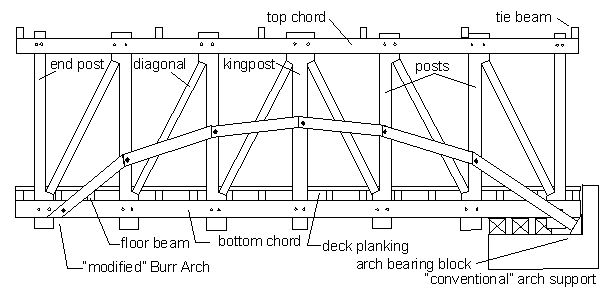Bridges come in many different shapes and sizes. There are many different kinds of bridges as well. The most popular and common bridges are beam bridges, truss bridges, arch bridges, suspension bridges, and many more.

The first and most simple kind of bridge is the beam bridge. It consists of three main parts which are the pile, the pile base, and the deck, as shown in the diagram above. This type of bridge was the first bridge to be built. In fact, the first beam bridges to be made were made by nature. Then, humans saw the nature bridge and imitated it, then made them more and more advanced as they are today. Beam bridges can either be made by one long piece that spreads across, or it can be made by multiple I-beams, trusses, or box girders. All in all, beam bridges are the most simple of all of the bridges and can easily be made.

The next type of bridge is called a truss bridge. These bridges consist of multiple triangles put together to create a strong base. Truss bridges are usually made with straight, steel bars that are used to make the sides of the triangles. This type of bridge is the oldest type of modern bridges that we see today. This bridge is more complex than beam bridges. Truss bridges consist of floor beams, a deck, stringers, struts, and more as shown in the diagram above. These bridges are the most effective material wise and are still used a lot today.

The next type of bridge are arch bridges. The arch bridges were very popular in ancient times around 1300 BC. They were favored for their natural strength by many. Romans were clever and made arches in door frames as well as bridges because of their strength. A lot of ancient architecture included arches as well. Most arch bridges today are made from steel or concrete and span up to 800 feet. These bridges have many supporting posts and because of their curved shape, they are very strong.

The last type of bridge is a suspension bridge. These bridges have a fairly simple design, but are very powerful and can span for 2,000-7,000 feet long, which is a lot longer than any other type of bridge. In fact, the longest spanning suspension bridge in the world is currently the Akashi Kaikyo Bridge in Japan which spans 6,532 feet. Most suspension bridges today have a truss system beneath the bridge to keep the bridge from bending and twisting.



